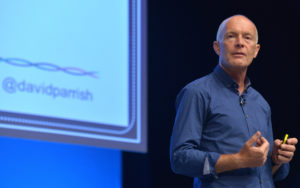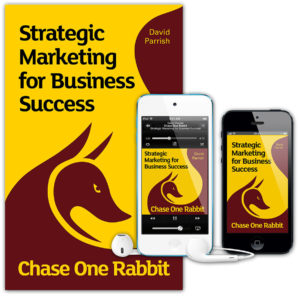As a management consultant I advised an advertising company in Scotland. Before my first visit I looked at their website and saw that they had a wonderful portfolio of work and an interesting list of clients. However, I didn’t get a sense of how big the company was, how many employees they had, or whether they were younger or older people. It was an impersonal website, even though it was stylish, with an intriguing, but abstract, business name.
I was welcomed into the office by two young women, the owners. In conversation I mentioned that, looking at their website, I had no idea that this company was owned and managed by two young women, which was quite unusual. (I emphasise that I was not making any value judgements here, simply stating a fact.) They explained that they’d deliberately hidden their gender and age, since they found that many potential clients had a prejudice against young women. I said that surely the customer would find out at some point that they were in fact two young women. If some customers really felt that they couldn’t trust the competence of young women, then they would not get their business anyway. On the other hand, for customers who might actually prefer to do work with young women, there was no way they could find out. In short, they would ‘get found out’ at some point, so why not simply come clean and publish the truth about themselves? This would simply save everybody’s time and quicken the process that would happen anyway, deterring some potential customers but at the same time attracting others.
I’ve found countless examples of businesses in the creative and digital sector whose websites don’t allow you to assess the actual people involved in delivering the services. These websites emphasise competence and professionalism. They may even have a show reel, a list of clients, and testimonials. But they actually hide their people!
Don’t hide from customers! is the title of a blog I wrote about this. It was a rant against the impersonal website which ostensibly advertises a friendly company, yet refuses to show who is involved within it. These websites often say ‘give us a ring for a chat’, or ‘call around for a cup of coffee’. Then they invite you to get in touch using an online form. They expect you to give details including your name, email address (and sometimes I wonder if next they’re going to ask us for a blood sample). Yet they don’t have the courtesy to display their own names! It really annoys me when they say ‘contact info@[companyname].com’ or email ‘hello@[companyname].com’.
And who the hell is ‘info@[companyname].com’? I don’t want to do business with somebody called ‘info’! Why aren’t they prepared to give me their name? Why not say ‘ring John Smith’ or ‘email Amy Brown’? Why are they hiding? What have they got to hide? Are they not really human beings? Are they Martians? Is the company actually run by dogs? Or robots? Call me old-fashioned if you like, but I want to know the name of the person I’m going to be speaking to. I want to get a sense of the human beings inside the organisation. Is that too much to expect?
These businesses expect potential customers to ‘get naked’ in front of them and yet they themselves are hiding behind the door. Their websites are like concrete walls with a small slit for you to post your requirements. There’s no shop window where you can look inside to see who’s there. This approach is the complete antithesis of being customer friendly.
If we want people to actually know, trust and like us, we need to come out and show our personalities. Is it too much to expect a photograph of the owner and staff on the website, together with some information about them? Many websites do this of course. What I find staggering is the number that don’t.
The owners of these impersonal websites misunderstand customers’ needs. They think the customer simply needs to know about their competence. But competence, though necessary, is not sufficient. The customer also is wondering ‘Can I deal with these people?’, ‘Can I trust them?’, ‘What are they like?’ It’s this second element that is often missing.
‘Your differences is your strength’ is the motto of an artist friend of mine, when giving business advice. That motto came to mind at this time. By being our authentic selves, by not equivocating or hiding, we simultaneously deter some customers and attract others. Yes, we will ‘lose’ some potential business, but we would never win that business anyway. On the other hand, those customers who love what we actually are will be all the more attracted to us, and more quickly.
So don’t hide your people. Of course you may have reason to hide, if you think that customers won’t like you! The truth is, some will like you and some won’t. So let’s just get on with it, tell them about ourselves. This will deter some people but attract others. This will happen anyway and the sooner we put our cards on the table, the sooner we will connect with the right kind of customers. By not hiding, you will allow people to know, like and trust you.
Show your personalities as well as your competencies in your marketing communications.
Key Points
The more that customers need to know, like and trust you, the more important it is that your marketing communications show your people and personalities. People don’t want to buy personal services from faceless companies. Don’t hide your people; come out! This will deter some customers but attract others – the right ones.
What to do next
• Ask someone who doesn’t already know your business (eg a friend of a friend) what they can tell from your marketing communications about the people in your business.
This is an extract from David’s marketing book ‘Chase One Rabbit: Strategic Marketing for Business Success. 63 Tips, Techniques and Tales for Creative Entrepreneurs’.
Read this and 62 more inspiring and practical marketing techniques on your smartphone by downloading this strategic marketing book as an eBook. It is also available as a paperback and as an Audiobook. This highly-acclaimed marketing book is also available in Spanish and French.
David Parrish is a marketing speaker, author and consultant. He works worldwide helping businesses to become even more successful by using the best strategic marketing techniques.



